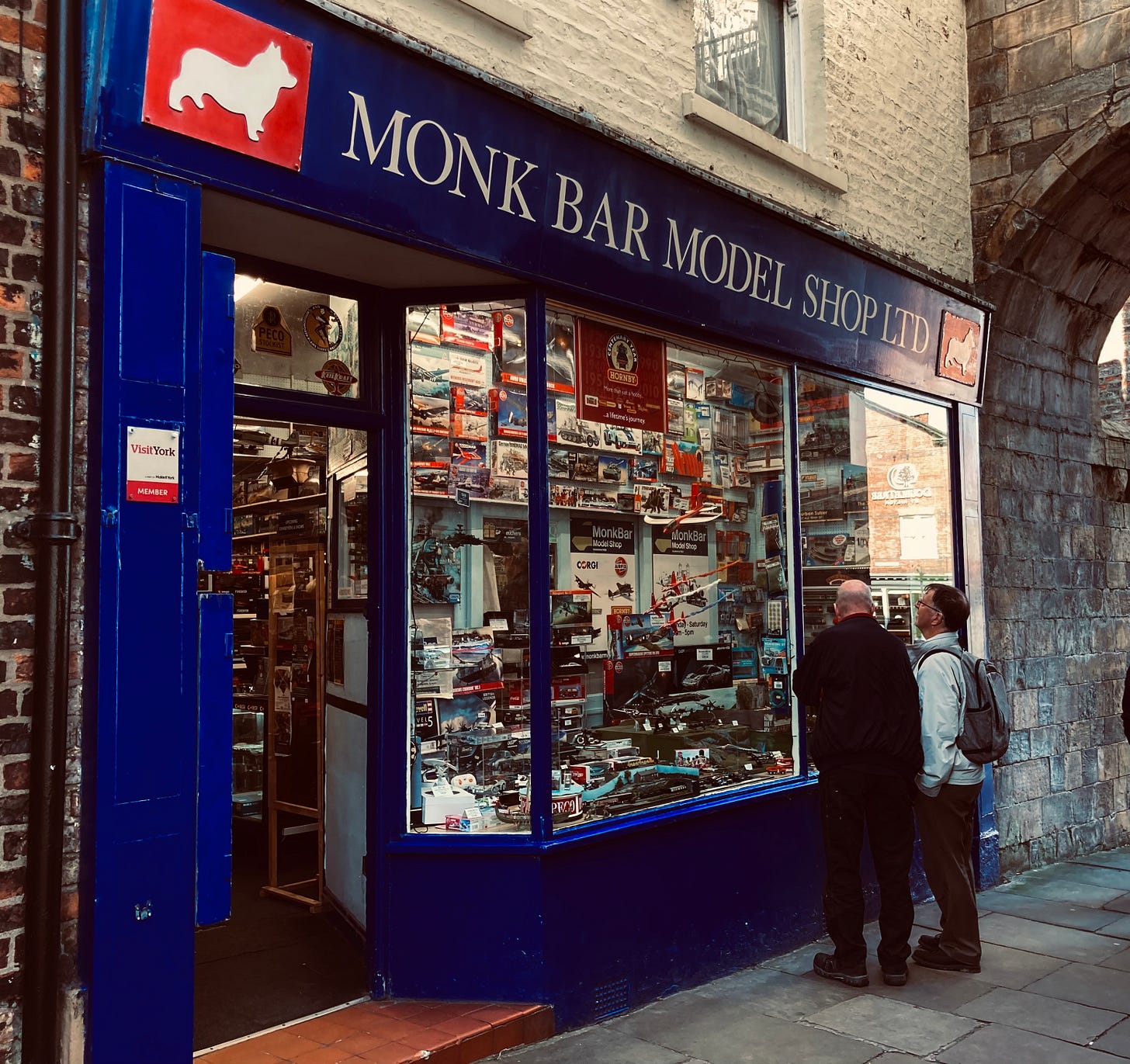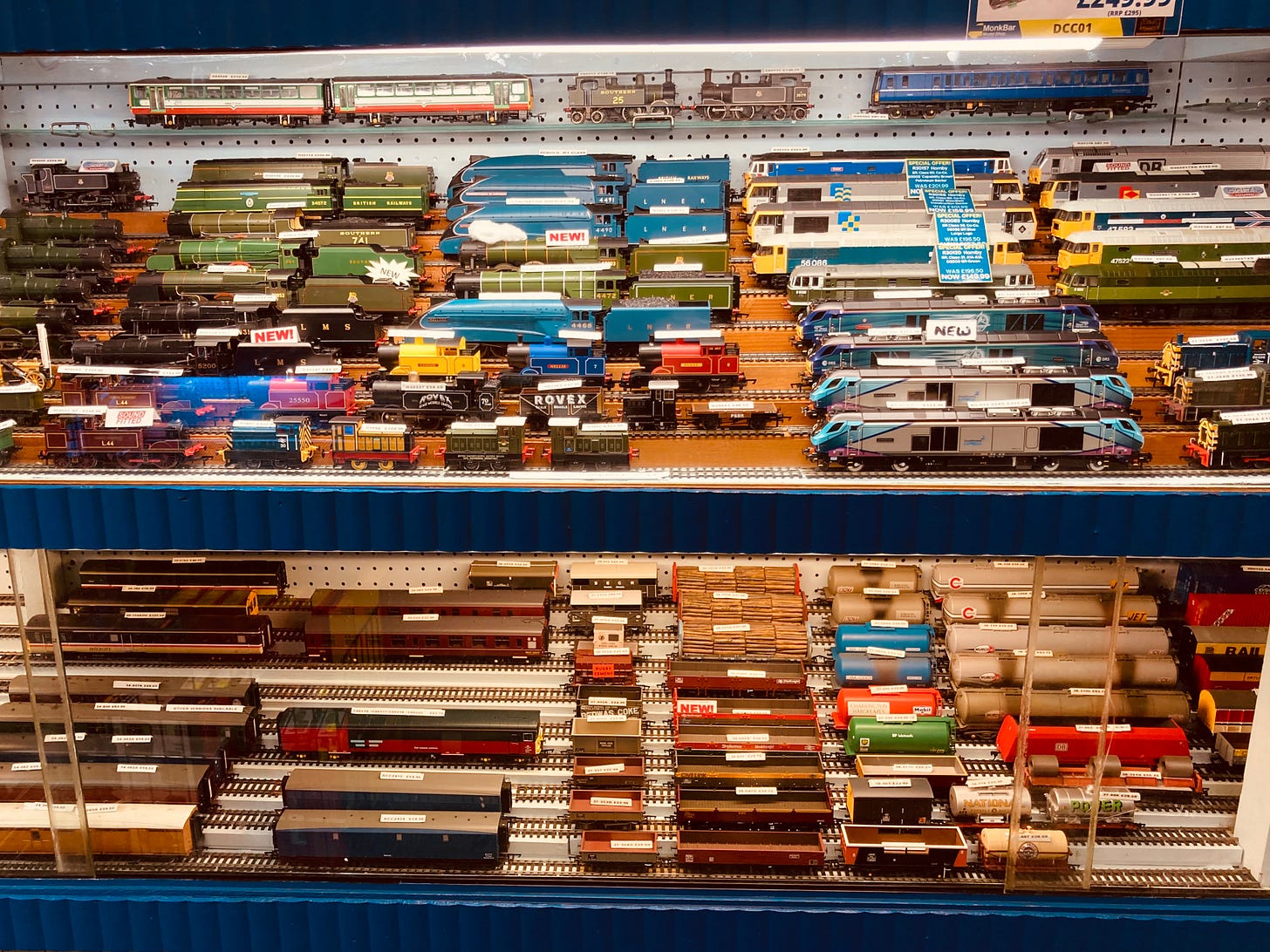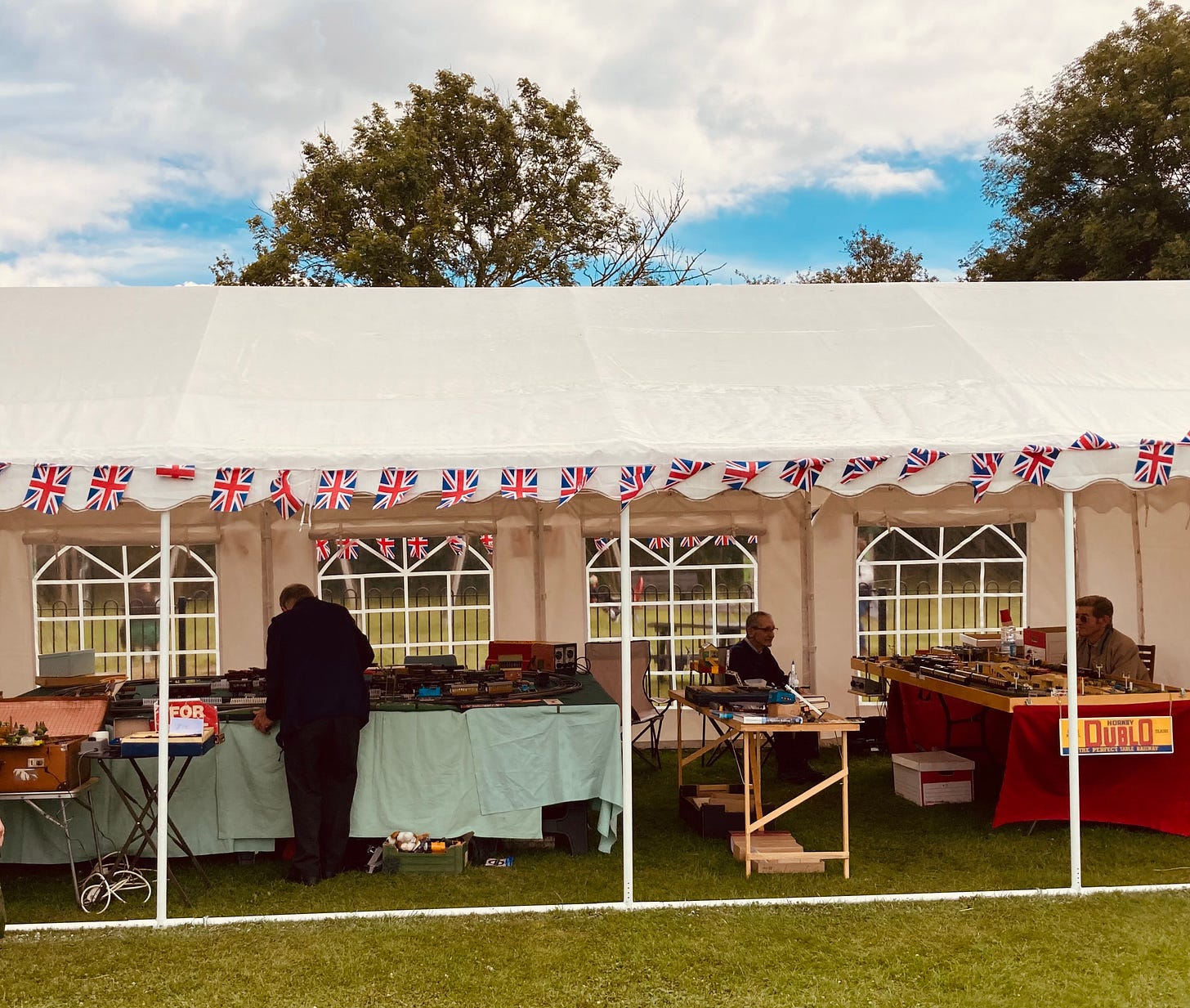When I was a boy, I aspired to become a railway modeller, inspired in this by my mate, Pete, whose dad, like mine, worked on the railway, and who therefore had the same entitlement as me to free rail travel. Pete and I once went from York to Aberdeen and back in a day just because we could; because Aberdeen was - as Edmund Hilary (or possibly George Mallory) said of Everest - ‘there’, albeit seven hours away. (We had about twenty minutes on one of its windy platforms before catching the train back.)
But unlike me, Pete, had a model railway, which he’d built with his father. It was in the box room in his house, which you had to enter on your knees. You could only stand up when you’d crawled towards the two-person sized hole in the board that accommodated the layout and was flush with all the walls. It was pretty basic kit: Hornby Dublo, I think. (‘Dublo’ was Hornby’s trademark for Double-O, the gauge that, in the late 1930s, eclipsed the chunky O-Gauge, being half the size. With Double-O, one could have a ‘tabletop’ as opposed to a ‘carpet railway’ or, to put it another way, a Double-O gauge railway was associated with houses that didn’t have servants.) Pete’s layout was attractive nonetheless: a rural scene with a station and small goods yard. I don’t think there was a window in the box room, so the layout, illuminated by its own few twinkling lights, was always in its own evening world.
Pete and his dad probably bought their kit from the wonderful Monk Bar Model shop, cosily located beneath Monk Bar (a gateway in York’s medieval City Walls) since 1963. As a boy, I would go there on Saturday afternoons to look at the model locomotives and carriages, stacked in their glass cases like a vertical rush hour, dreaming of my own layout. The professorial shop assistants – who I think wore white coats back in the 1960s – were very un-pushy, and it might be a quarter of an hour before one of them gently enquired, ‘Can I help you, young man?’ at which point, I’d take the soft option of buying a railway postcard or jig-saw, deferring my modelling dream, to which we will return in a moment.
…But I should mention that I happened to be in Monk Bar Model Shop last week, and I had a word with the owner (only the third one the shop has had), Andy Masheder. He said that, contrary to the perception of railway modelling as being perpetually dying, business was good: ‘Research by Hornby shows that, once people get into modelling they tend to stick with it.’ He added, however, that they might duck out briefly during their teenage years, wary of being labelled a nerd.
I was on the brink of those years when I finally acquired an oval of Dublo track and a modest tank engine of some sort. I nailed the track down onto a piece of chipboard, and the idea was that a whole landscape would rise up around it. Somehow papier mâché would be involved in the creation of hills, on which I would then glue those green crumbs that signify grass on a layout. It never happened though. The bleak board became warped in the garden shed; adolescence kicked in, and Monk Bar Model Shop dropped off my Saturday afternoon itinerary, being replaced by a visit to Red Rhino Records.
Becoming the father of two sons brought further flirtation with railway modelling. I would take the boys to Pendon Museum in Long Wittenham Oxfordshire, to see the work of the late Roye England, perhaps the greatest railway modeller that ever lived and likely to be the subject of another post. Or perhaps Roye was more of a landscape modeller? He would spend longer recreating in miniature a cottage from the 1930s Vale of White Horse than it would have taken to build the actual cottage.
Whenever we went by train to York, we dropped in to see Rail Riders World, a superb, diorama within a former tea-room located half-in and half-out of York Station. The trains, including an Intercity 125, the Orient Express and the Royal Train, ran through a Bavarian landscape (probably to justify the hills) populated by ‘a thousand miniature people’ who were plunged into darkness – to show off the lights – every three minutes. Rail Riders World was the showpiece of Rail Riders, a club for young enthusiasts, known (to its promoters, British Rail) at ‘the happiest club in the world’. It existed between 1981 and 1991, and its figurehead was the chirpy DJ, Keith Chegwin (‘Cheggers’). Members were entitled to discounted rail travel, so it would have been of no interest to me even if it hadn’t post-dated my youth, because I already had discounted rail travel. In 2011, the layout moved to a site in Lincolnshire, and the tea-room, looking once again much as it did when it opened in 1907, is now a real-ale pub called the York Tap.
Despite Rail Riders World, and even though my sons both have some technical ability, they never became railway modellers. Nor did I, but then I have no technical ability. Even simple DC analogue modelling is probably beyond me; I could never attempt its modern refinement, Digital Command Control, which allows each loco to be controlled separately, so that you could have one running into the back of another, for example, if you were violently inclined.
At a village fete in Bedfield, Suffolk, a couple of months ago, however, a way forward (or backwards) did suggest itself.
Keep reading with a 7-day free trial
Subscribe to Reading on Trains to keep reading this post and get 7 days of free access to the full post archives.






